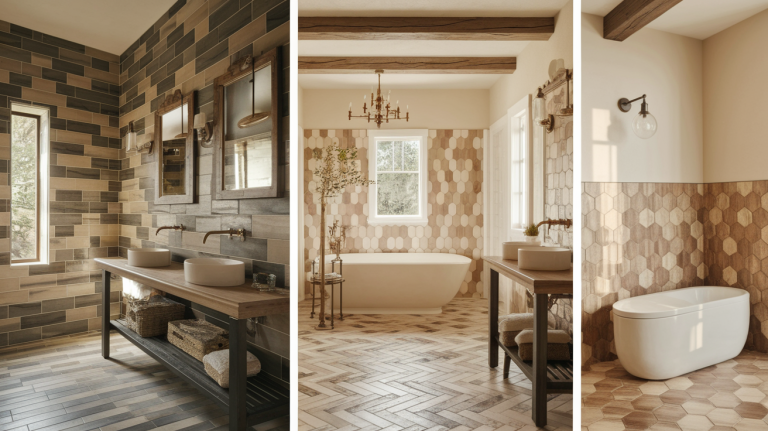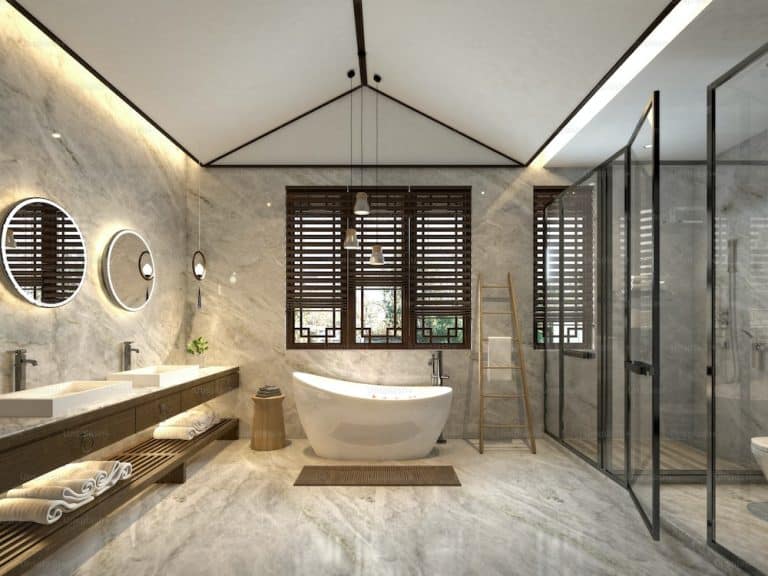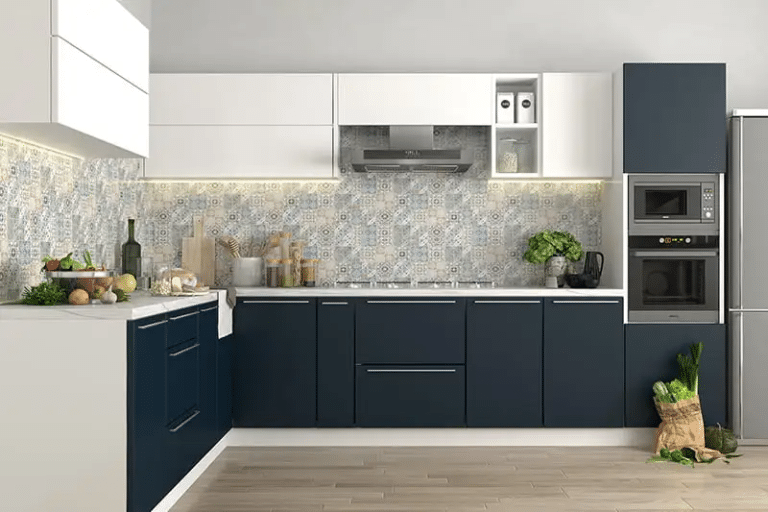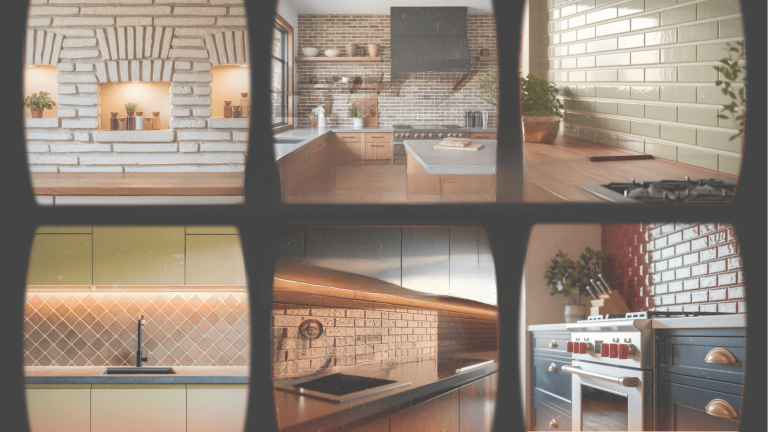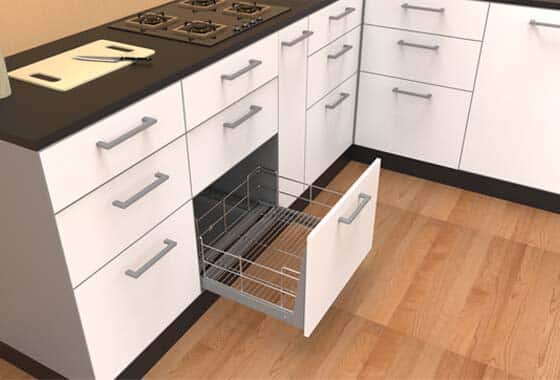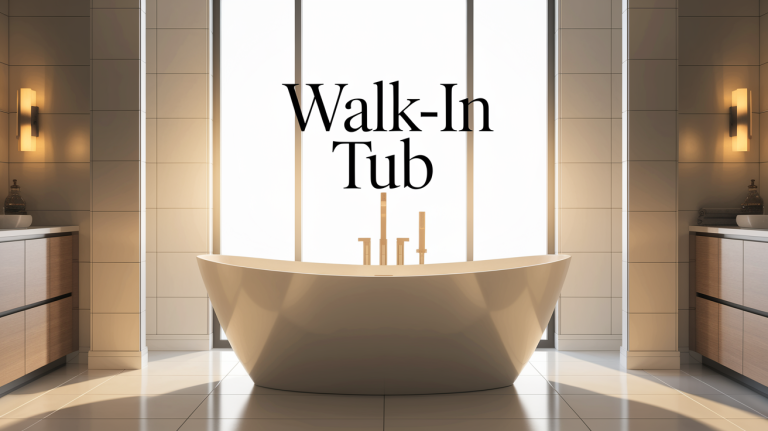15 Key Features to Add in Your Wabi Sabi Kitchen
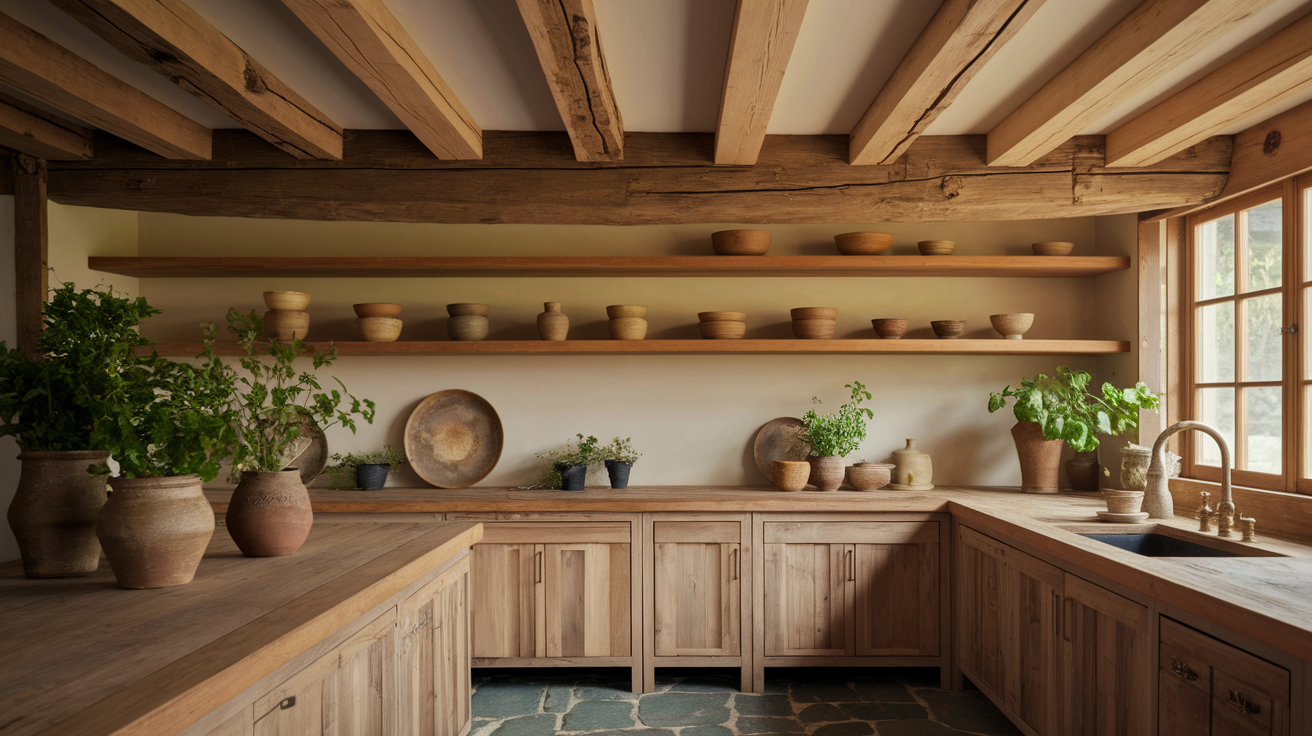
Are you tired of kitchens that look too perfect? A Wabi Sabi kitchen might be what you want. This Japanese approach accepts things that are simple, worn, and natural.
Wabi Sabi kitchens stand out from the usual spotless cooking spaces. They show charm through small marks, uneven surfaces, and items that tell a story.
These kitchens focus on useful items, natural materials, and a calm feel. They work well for people who like spaces with character and meaning.
This blog will show you the must-have features of a Wabi Sabi kitchen. This style proves that beauty often comes from things that aren’t perfect.
Understanding Wabi-Sabi Design
Wabi-sabi is a Japanese philosophy that celebrates the beauty of imperfections, aging, and the natural cycle of life. It focuses on simplicity, humility, and a strong connection to nature, valuing flaws and changes as part of a thing’s unique beauty.
Key Principles of Wabi-Sabi Design
- Imperfection: Wabi-sabi appreciates cracks, wear, and imperfections in objects, seeing them as signs of authenticity and character rather than flaws.
- Transience: It honors the temporary nature of life, holding aging, decay, and weathering as beautiful and natural processes.
- Simplicity: The design focuses on minimalism, with clean lines, neutral colors, and uncluttered spaces to create calm and peace.
- Natural Materials: Materials like wood, stone, and clay are used in their natural forms, showing their textures and imperfections to bring warmth to a space.
- Muted Colors: Soft, earthy colors such as grays, browns, and greens help create a soothing, serene atmosphere that mirrors nature.
- Functionality Over Form: Wabi-sabi values objects for their purpose, avoiding unnecessary decoration and focusing on essentials to maintain peace and simplicity in the space.
Wabi Sabi Kitchen Design Ideas
Wabi-sabi kitchen design focuses on simplicity, natural materials, and embracing imperfections. Here are some ideas to incorporate this calming, rustic style into your kitchen.
1. Natural Wood Countertops
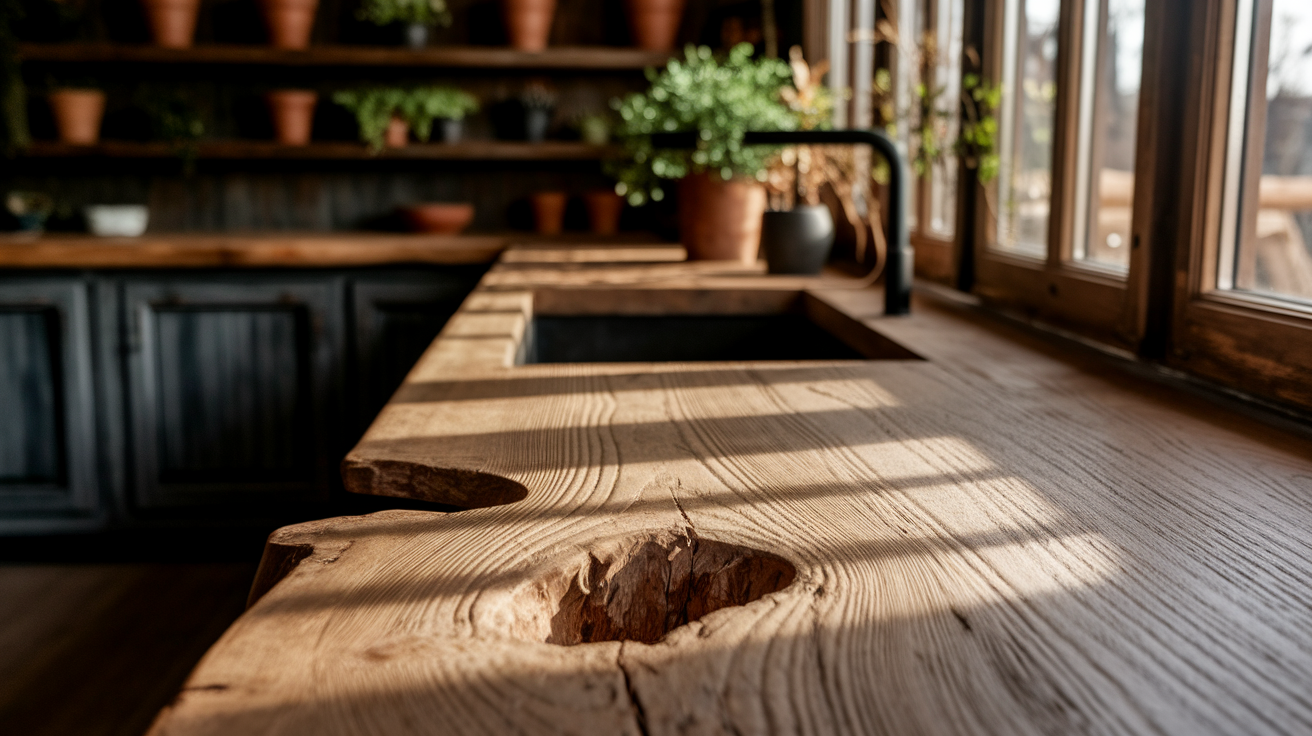
Wood countertops bring warmth and life to your kitchen.
Why Choose Natural Wood:
- Shows visible grain patterns and knots
- Each piece has unique markings
- Changes color over time
- Collects meaningful scratches and stains
Best woods for Wabi-Sabi countertops:
| Wood Type | Characteristics | Aging Quality |
|---|---|---|
| Maple | Light, subtle grain | Darkens to a warm honey color |
| Walnut | Rich, dark tones | Develops character marks over time |
| Oak | Strong visible grain | Gets smoother with use |
2. Handmade Ceramic Dishes
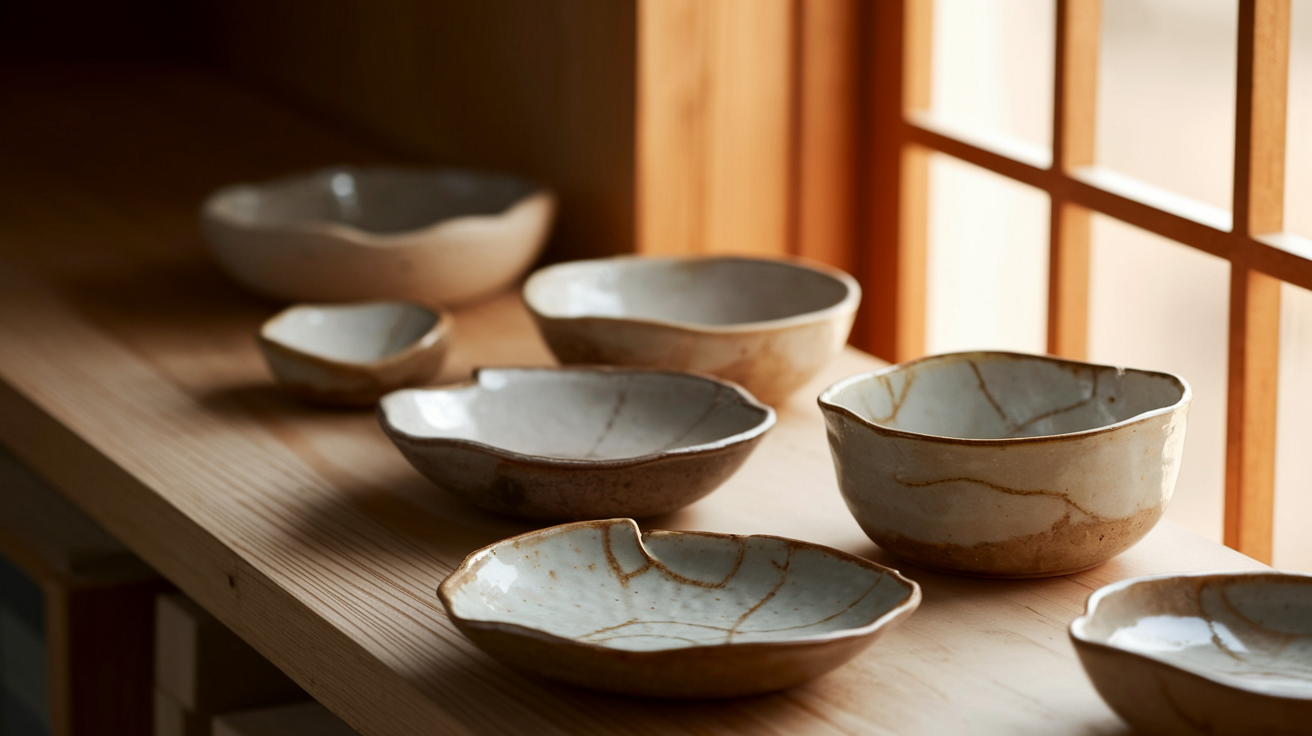
Store-bought dishes often look too perfect. Handmade ceramics tell a story through small marks and variations.
What Makes Handmade Ceramics Special:
- Visible fingerprints or tool marks
- Slightly uneven edges
- Subtle color variations
- Unique glazing patterns
Where to Find Authentic Handmade Ceramics:
- Local craft fairs
- Pottery studios
- Artisan markets
- Small batch makers online
3. Open Shelving
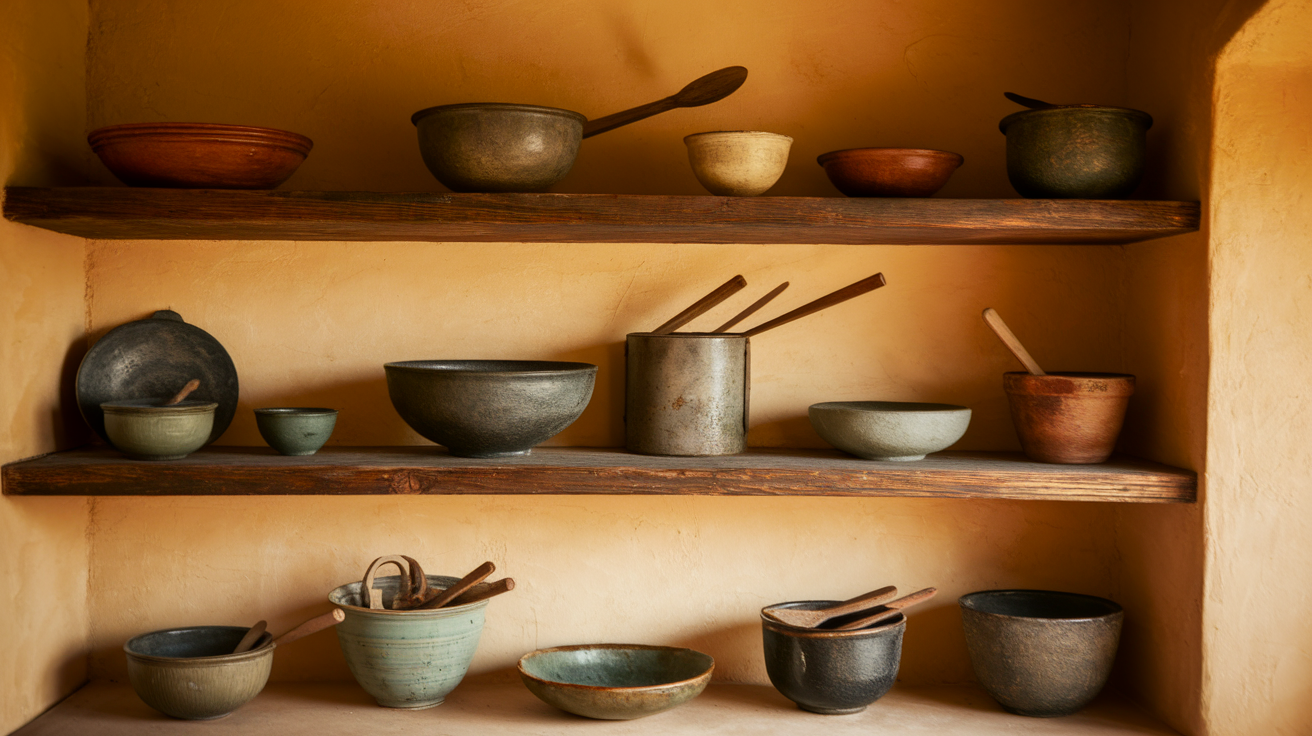
Cabinets hide your kitchen items behind doors. Open shelving creates honesty in your space.
Benefits of Open Shelving:
- Displays well-loved tools and dishes
- Make everyday items part of your decor
- Creates a sense of openness
- Shows the real life of your kitchen
Design tip: Opt for simple shelves crafted from natural materials, such as reclaimed wood or raw metal brackets.
4. Stone or Clay Floor Tiles
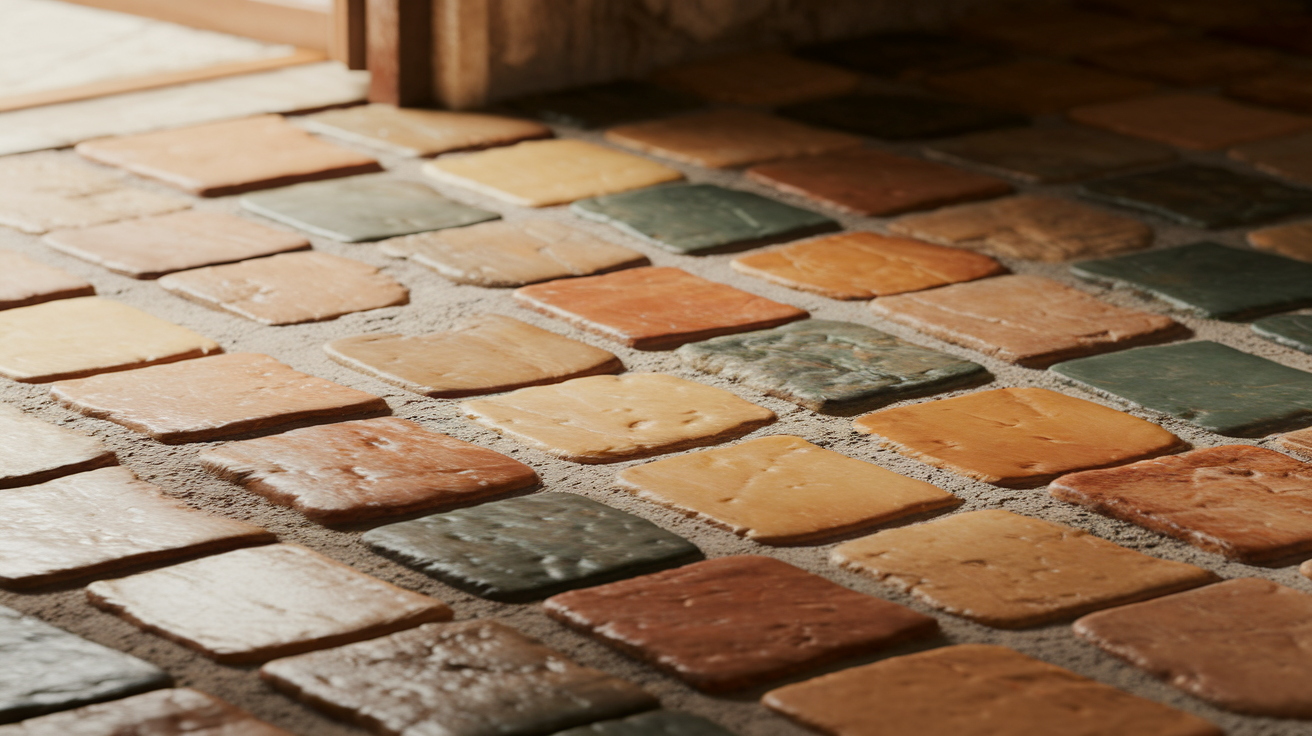
Smooth, perfect floors have no place in a Wabi-Sabi kitchen. Natural tiles create a foundation with character.
Why Choose Stone or Clay Tiles:
- Bring natural texture to your floor
- Feel good underfoot
- Age beautifully with time
- Show wear patterns from daily life
Best Natural Tile Options:
| Material | Characteristics | Aging Process |
|---|---|---|
| Slate | Varied texture, layered look | Subtle color shifts over time |
| Terracotta | Warm earth tones | Develops worn paths and patina |
| Natural Stone | Unique markings | Edges soften with foot traffic |
| Clay Tiles | Handmade variations | Colors deepen with use |
5. Patina on Metal Fixtures
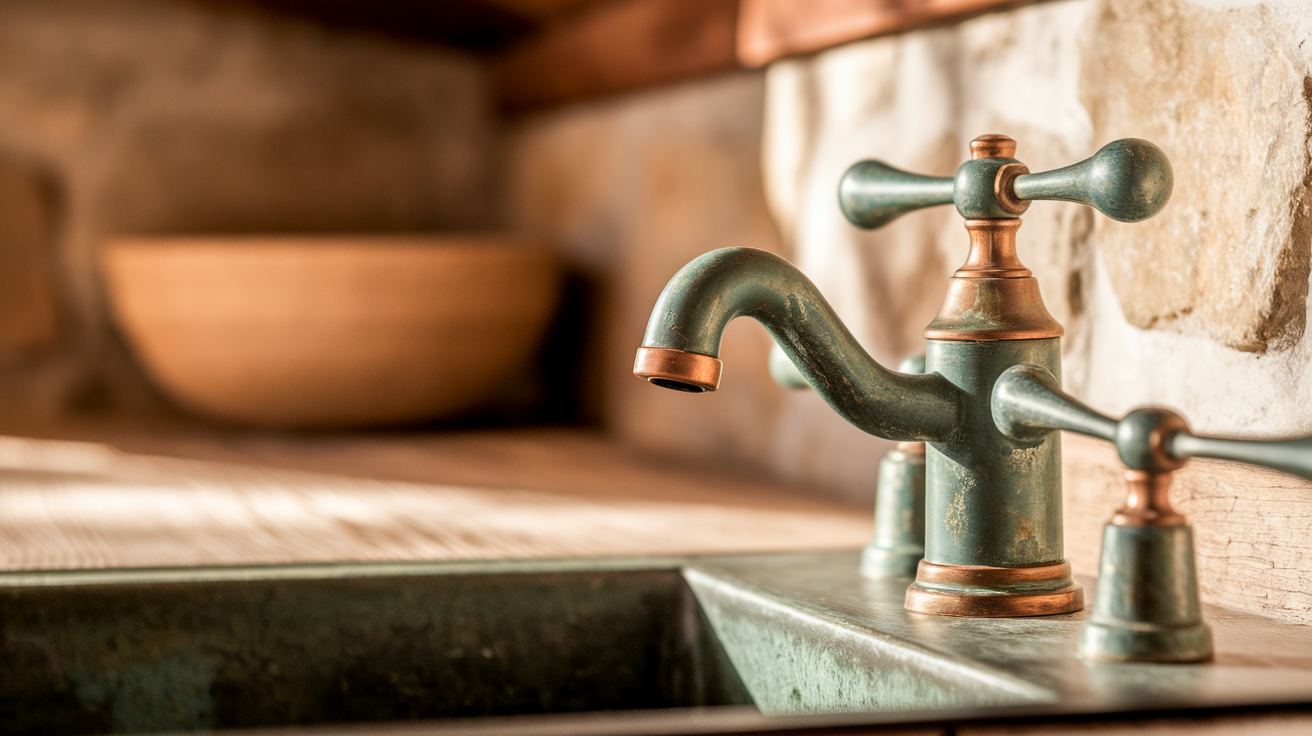
New, shiny metal looks out of place in a Wabi-Sabi kitchen. Aged metals tell the story of your home.
Metals that Develop Beautiful Patina:
- Copper: turns from bright orange to deep brown
- Brass: develops golden-brown tones
- Bronze: creates rich, varied coloration
- Wrought iron: forms subtle rust spots
Maintenance tip: Avoid harsh cleaners. Wipe with a damp cloth only when needed. Let natural patina form.
6. Visible Wood Joints in Cabinetry
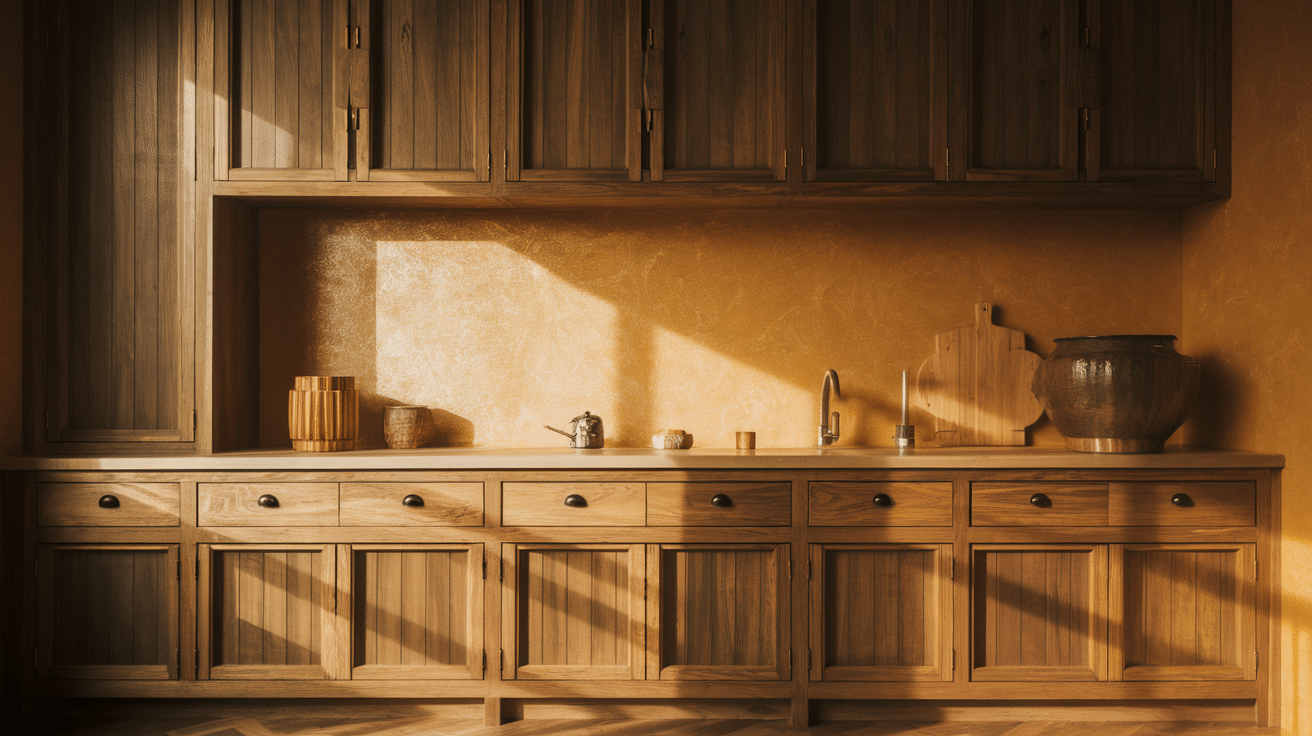
Most modern cabinets hide how they’re put together, whereas Wabi-Sabi celebrates honest construction.
Types of Visible Wood Joints to Look For:
- Dovetail joints at corners
- Mortise and tenon connections
- Visible wooden pegs or dowels
- Finger joints along edges
Design note: Cabinets with visible joints often use less hardware, focusing on the beauty of wood connections.
7. Mismatched Chairs
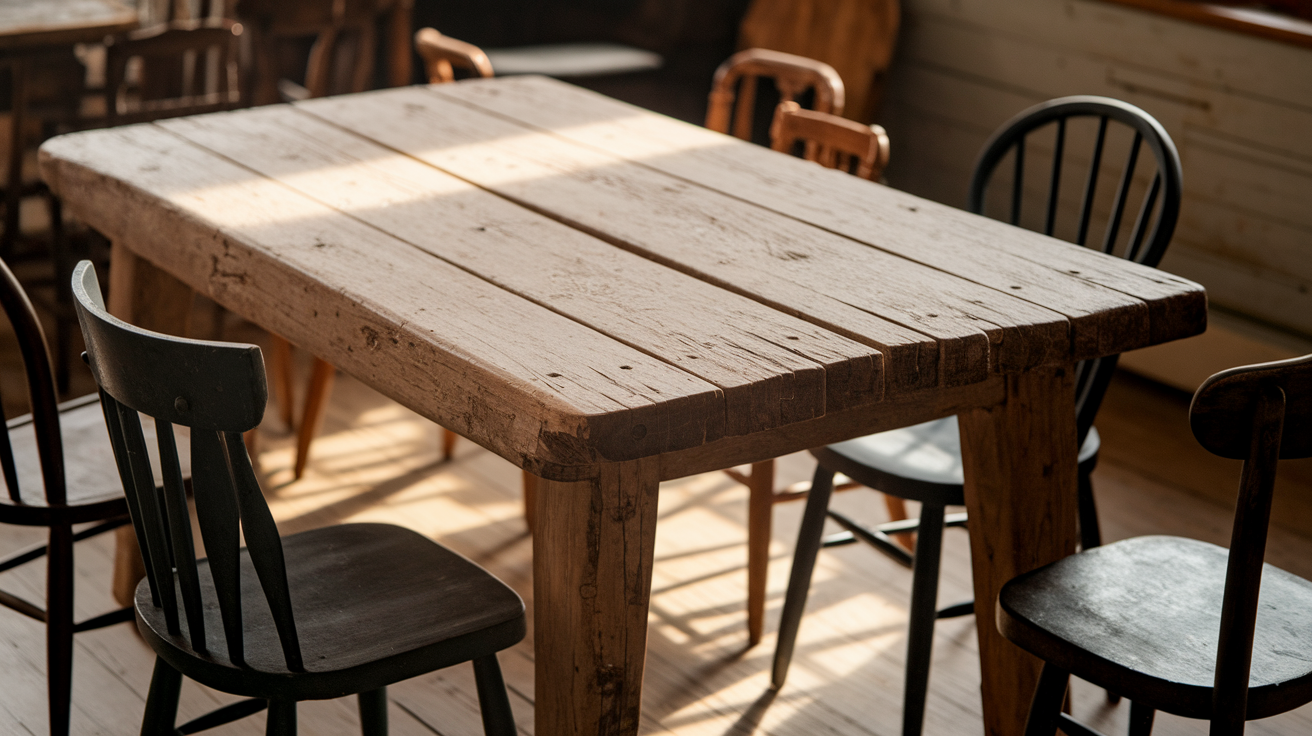
A set of identical chairs looks too planned. Mismatched seating creates warmth and history.
Ways to Mismatch Effectively:
- Combine wooden chairs in different styles
- Mix a bench with individual chairs
- Use chairs from different eras
- Include seats with varied finishes
Collecting tip: Look for chairs at second-hand stores, yard sales, or family hand-me-downs for pieces with history.
8. Textured Walls
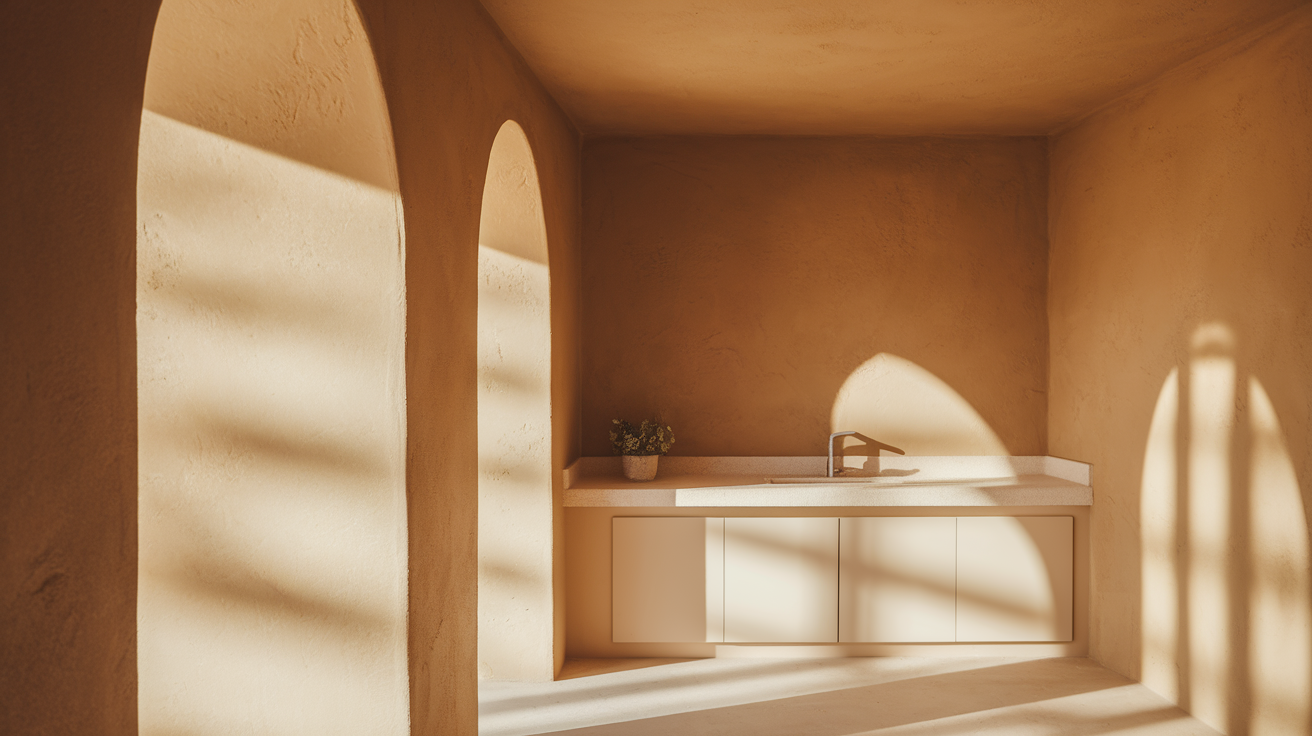
Flat, smooth walls lack character, you can go for textured finishes to add depth and visual interest.
Natural Wall Textures to Consider:
- Lime wash with subtle color variations
- Clay plaster with hand-troweled finish
- Textured paint techniques
- Exposed brick or stone sections
Comparing wall texture options:
| Texture Type | Application Method | Visual Effect |
|---|---|---|
| Lime Wash | Brushed on in layers | Soft, cloudy appearance |
| Clay Plaster | Applied by hand trowel | Organic, earthy look |
| Venetian Plaster | Layered and burnished | Subtle shine with depth |
| Exposed Materials | Remove the existing covering | Raw, authentic surface |
9. Exposed Wooden Beams
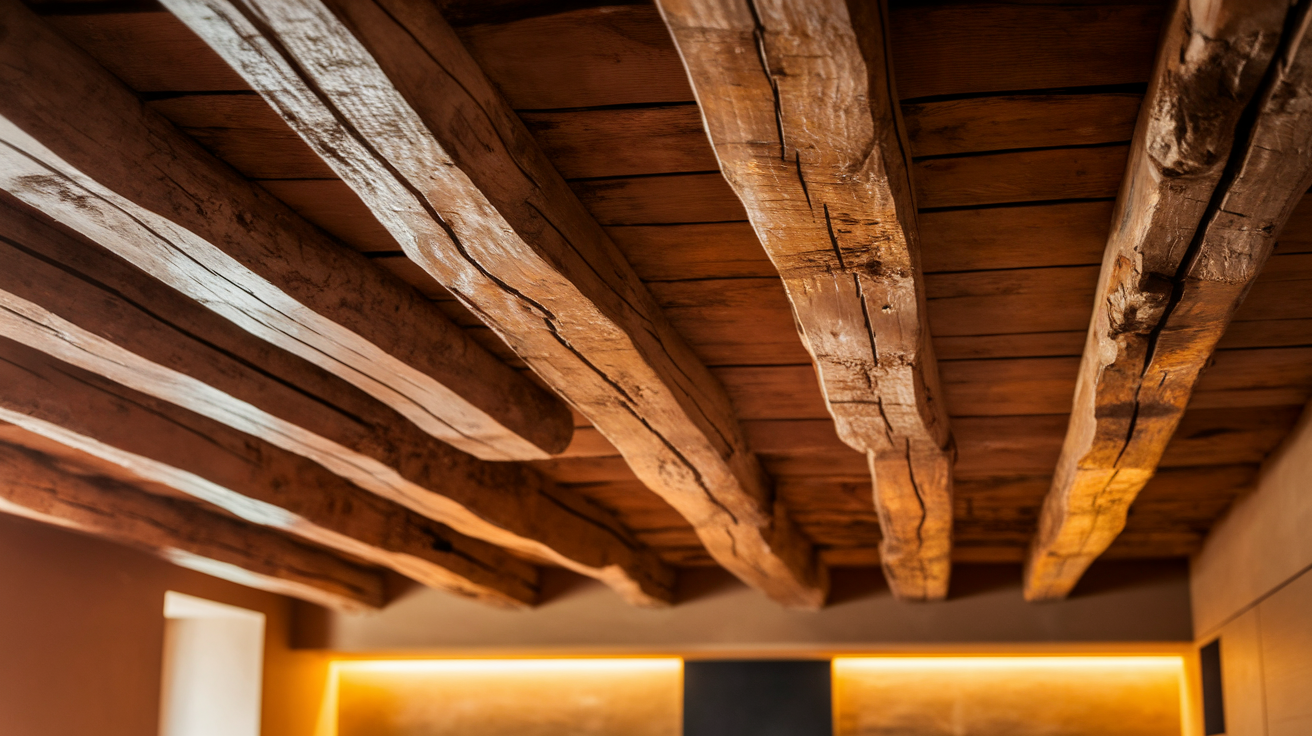
If your home has ceiling beams, don’t hide them. These structural elements add character and history.
What to Look for In Wabi-Sabi Beams:
- Natural knots and grain patterns
- Small cracks that show age
- Worn edges or corners
- Marks from original construction
Finish tip: Use natural oils or clear matte sealers to protect wood while keeping its raw, natural look.
10. Well-Worn Cutting Boards
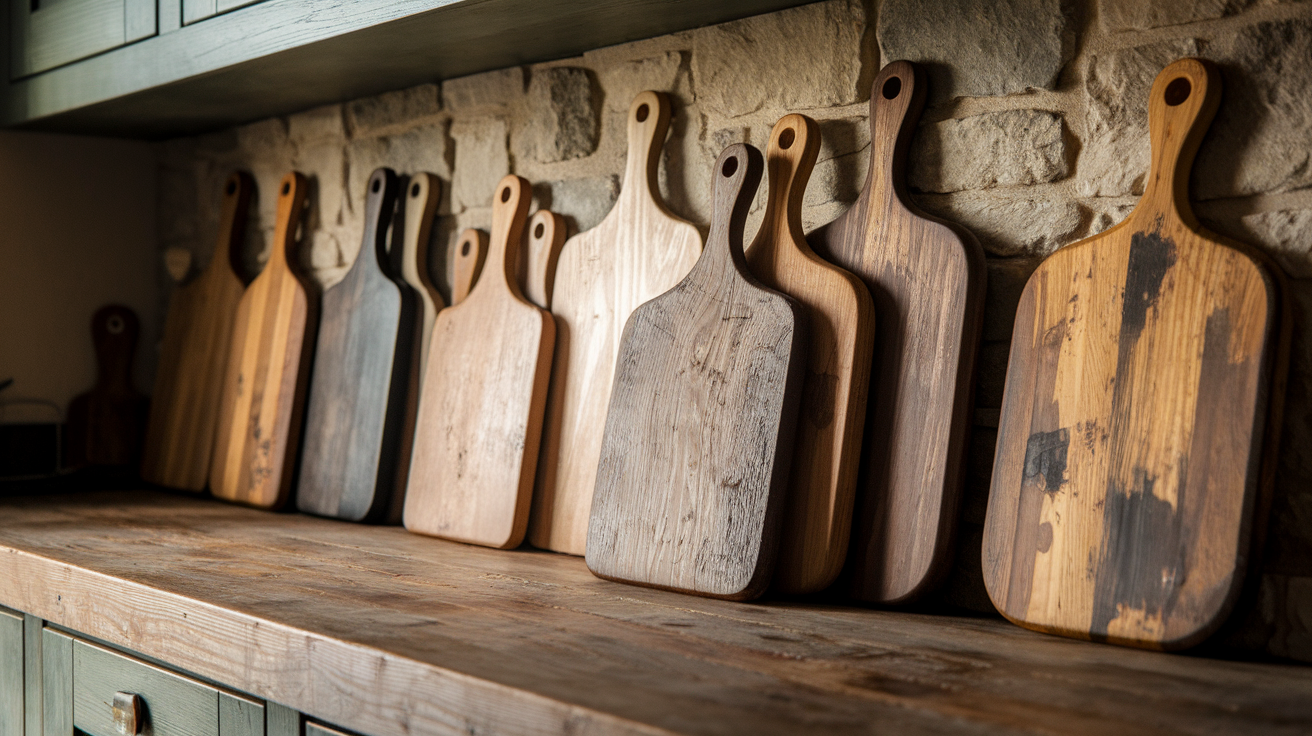
New cutting boards look nice but lack soul. Used boards tell the story of countless meals.
Signs of a Well-Loved Cutting Board:
- Knife marks create unique patterns
- Slight stains from foods and oils
- Raised grain from water exposure
- Rounded edges from years of handling
Best Woods for Aging Cutting Boards
| Wood Type | Aging Characteristics | Maintenance Needs |
|---|---|---|
| Maple | Develops a honey patina | Occasional oil |
| Walnut | Shows contrast between the marks and the wood | Less frequent oiling |
| Cherry | Darkens beautifully with age | Regular light oiling |
| Teak | Natural oils help it age gracefully | Minimal care needed |
11. Plants in Simple Pots
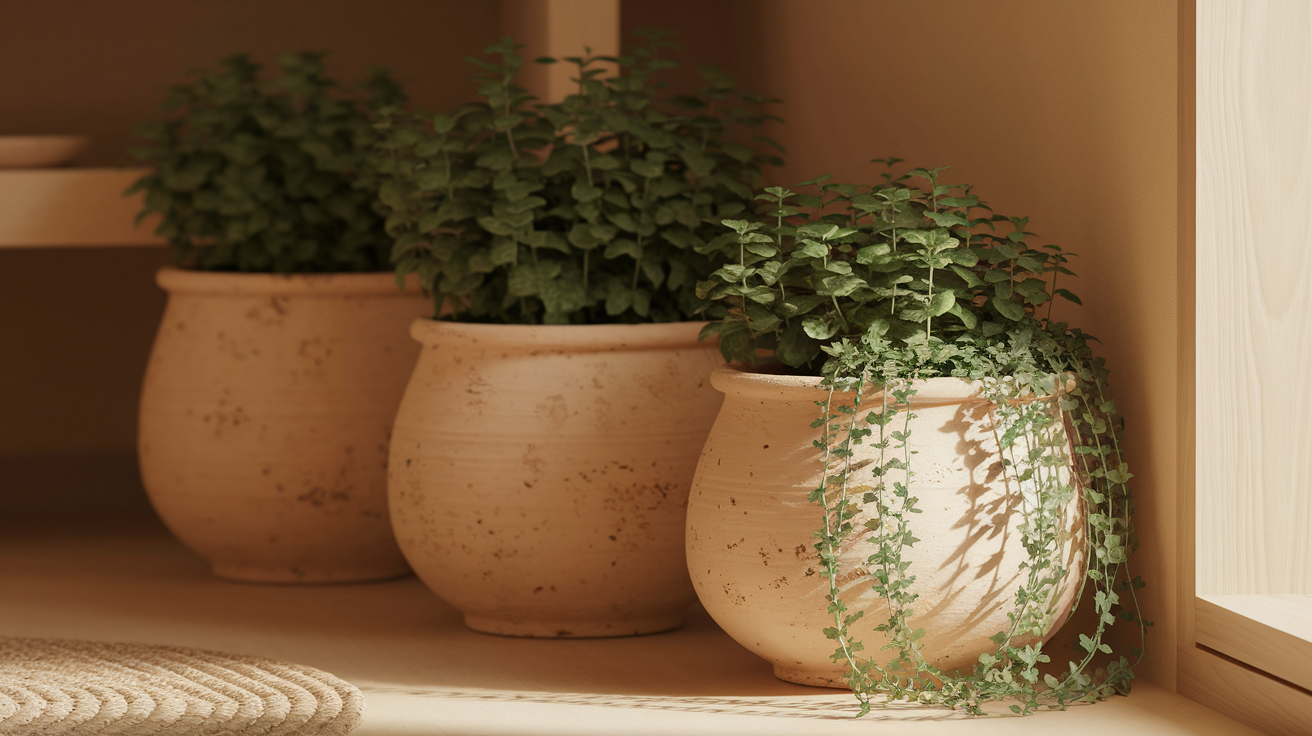
Plants bring life and growth to your kitchen, and with simple containers, let nature be the star.
Container Options for Wabi-Sabi Plant Display:
- Unglazed terracotta pots
- Cracked pots with visible repairs
- Simple wooden boxes
- Stone containers with natural variations
Best Plants for Wabi-Sabi Kitchens
| Plant Type | Visual Appeal | Practical Benefit |
|---|---|---|
| Herbs | Change with seasons | Useful for cooking |
| Succulents | Grow slowly, show patience | Low maintenance |
| Spider Plants | Trailing offshoots | Clean air naturally |
| Small Citrus | Fruit, flowers, leaves | Fragrance and food |
Arrangement tip: Group plants of different heights and textures together for a natural, unplanned look.
12. Hand-Woven Textile Items
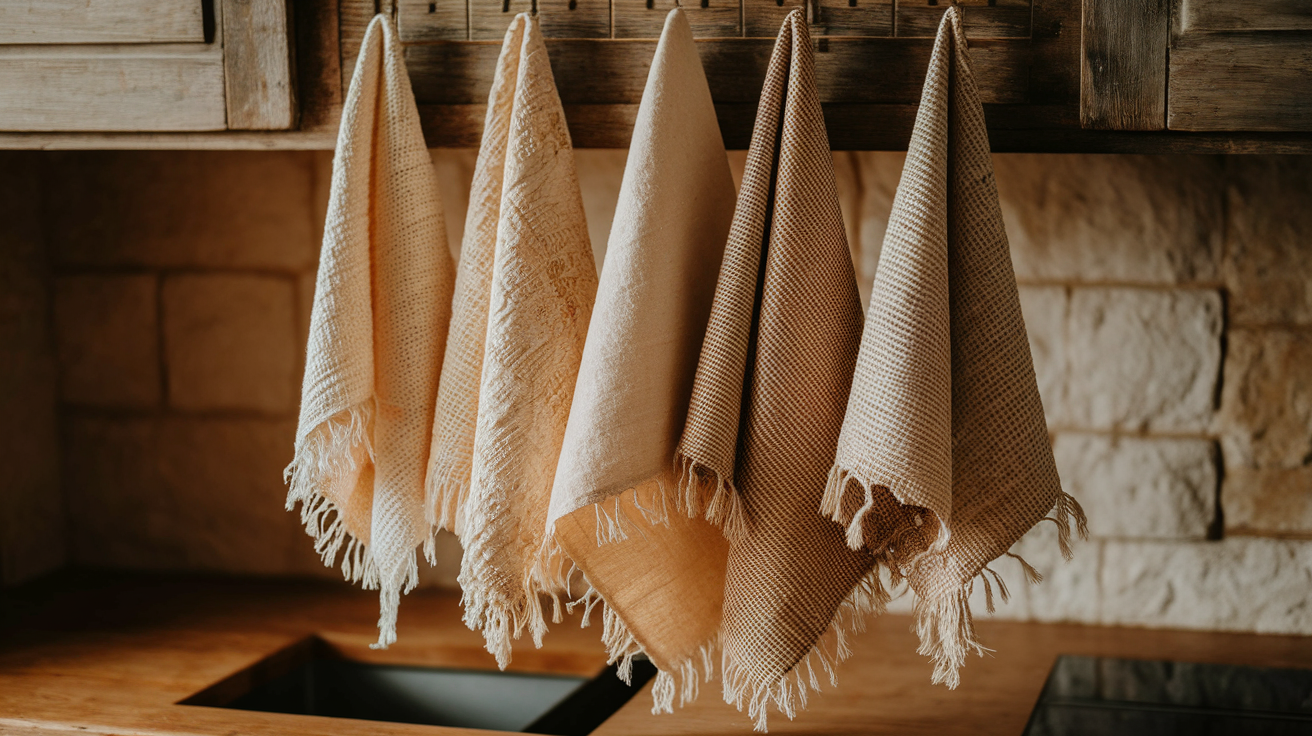
Mass-produced textiles often look too perfect. Hand-woven items bring warmth and texture.
Textile Items to Include:
- Dish towels with visible weave patterns
- Table runners with natural color variations
- Cloth napkins with slightly uneven edges
- Chair cushions made from natural materials
Natural Fibers for Wabi-Sabi Textiles:
| Fiber Type | Tactile Quality | Aging Process |
|---|---|---|
| Linen | Crisp but softens with use | Develops slub texture over time |
| Raw Cotton | Nubby texture | Softens and fades naturally |
| Hemp | Strong with visible fiber | Becomes softer with each wash |
| Wool | Warm and textured | May felt slightly with use |
Selection tip: Look for items with visible selvage edges, hand-stitched hems, or natural dye variations.
13. Simple Window Treatments
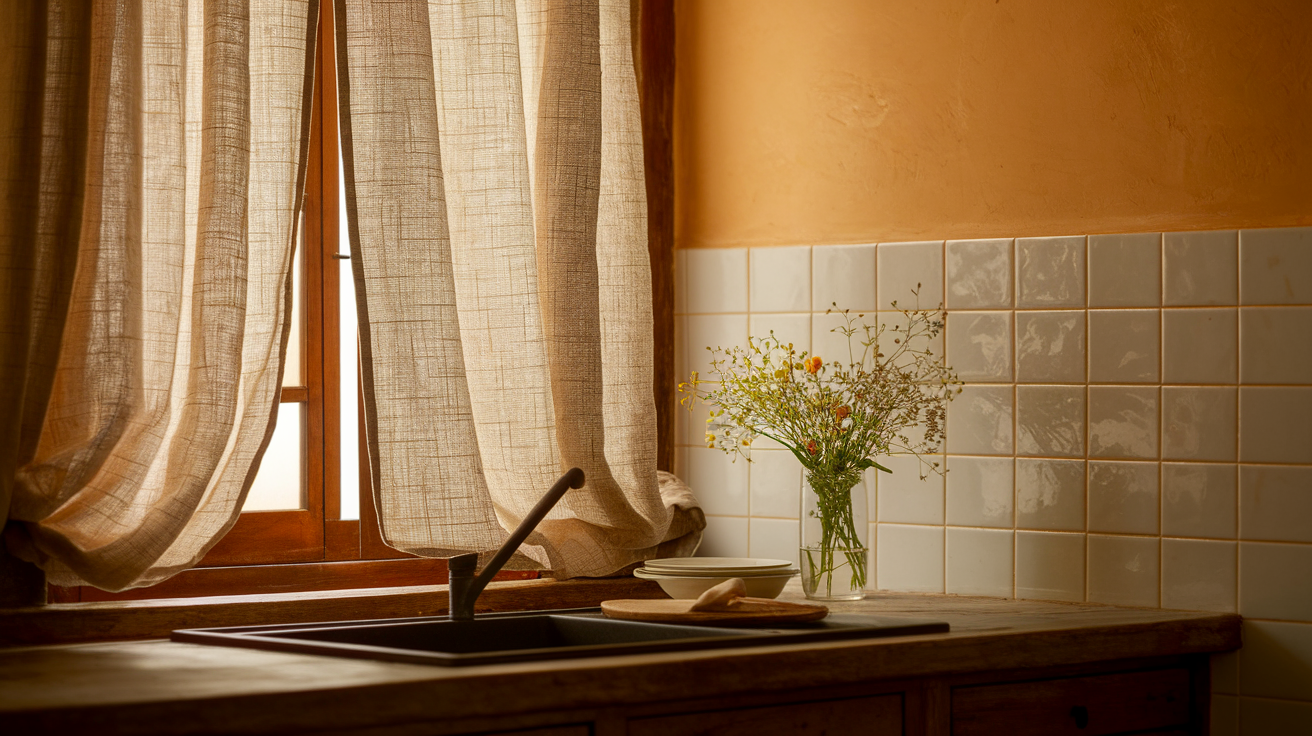
Heavy curtains block natural light. Wabi-Sabi kitchens thrive on connection to natural light.
Window Treatment Options:
- Simple linen panels that filter light
- Wooden blinds with visible grain
- Bamboo shades with natural variations
- No treatments at all for maximum light
Privacy tip: For windows needing coverage, choose simple bottom-up shades that block view but allow light through the top.
14. Wooden or Bamboo Utensils
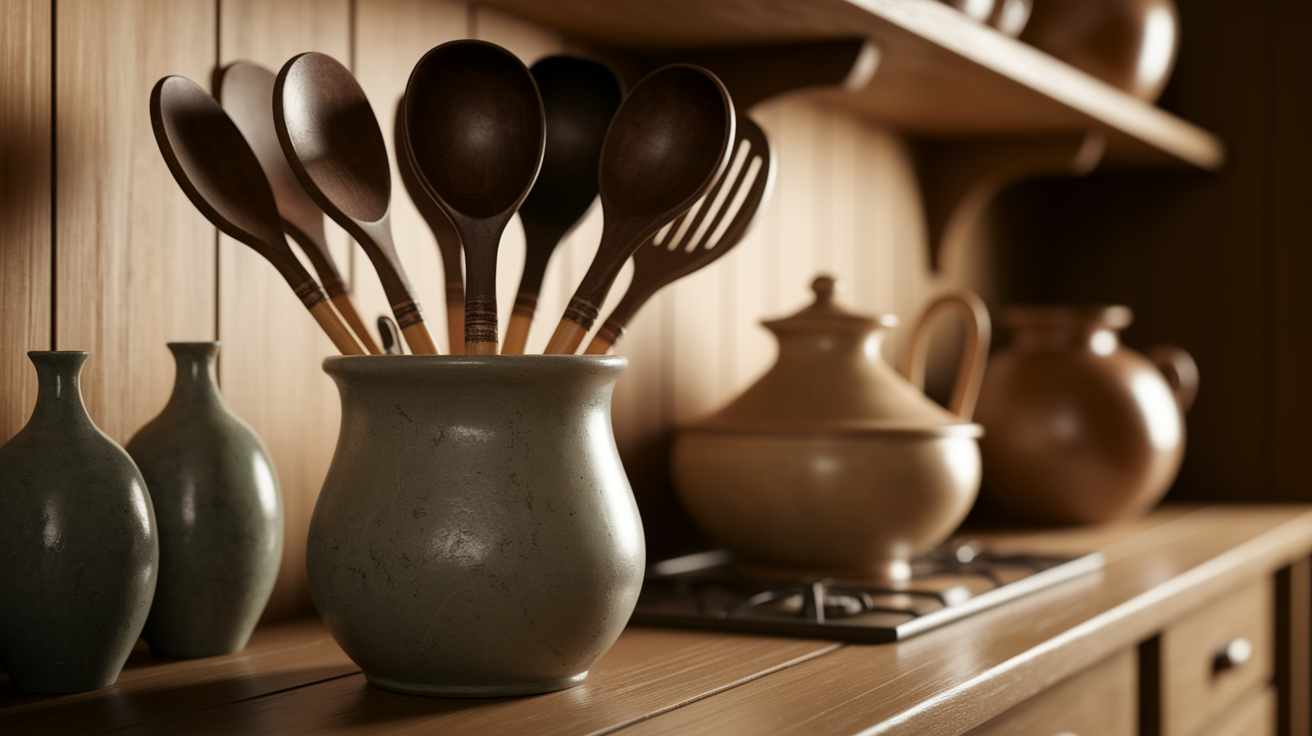
Plastic and metal utensils feel cold and man-made. Natural wood tools connect you to cooking traditions.
Must-Have Wooden Kitchen Tools:
- Long-handled stirring spoons
- Flat-edged spatulas
- Serving spoons with deep bowls
- Cooking with chopsticks for various tasks
Care tip: Hand wash wooden tools with mild soap, dry immediately, and oil occasionally with food-safe oil.
15. Dried Herbs or Flowers
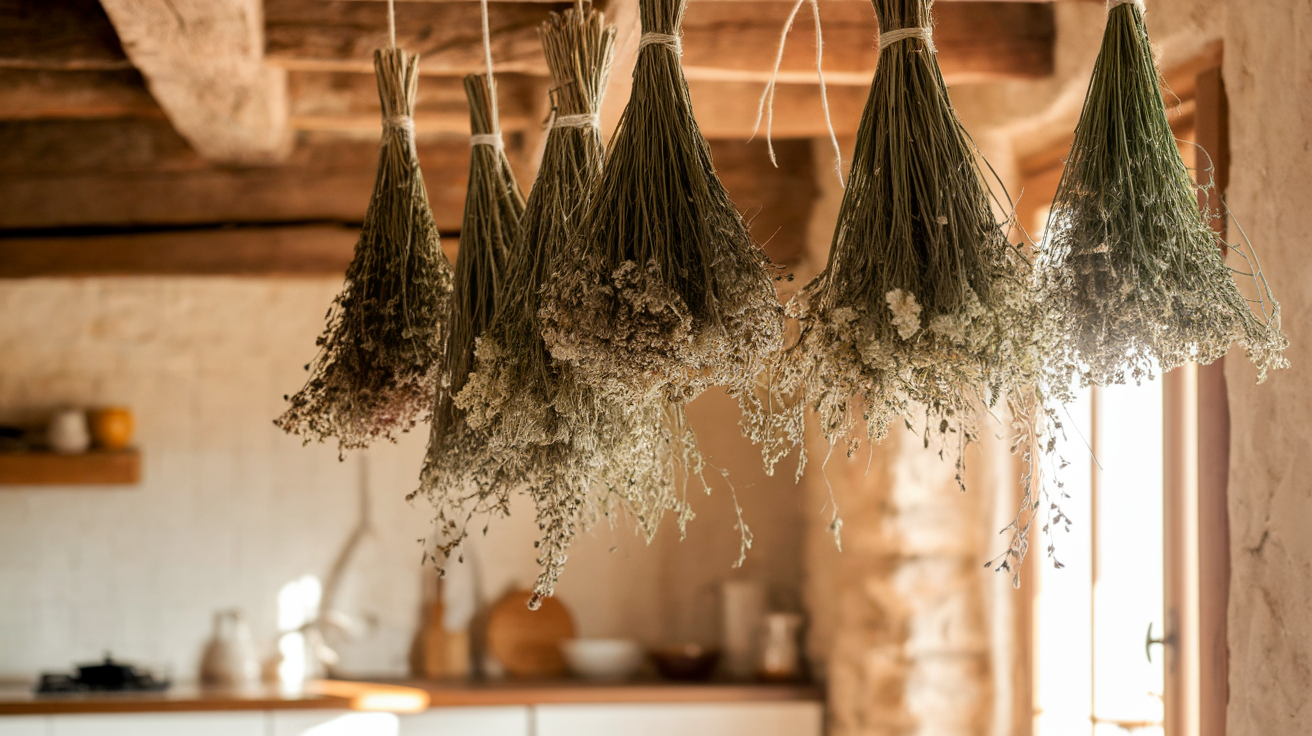
Modern kitchens often look too clean and stark. Dried plants add natural beauty that changes over time.
Plants that Dry Beautifully:
- Lavender stems with buds attached
- Rosemary sprigs that stay fragrant
- Sage leaves with their a soft, fuzzy texture
- Hydrangea blooms that hold their shape
Selection tip: Choose plants at various stages of development to illustrate the natural progression and changes that occur over time.
Conclusion
A Wabi-Sabi kitchen isn’t about reaching perfection. It’s about creating a space that feels lived-in, useful, and true to your daily life.
These features we’ve looked at show how small changes can turn your kitchen into a more peaceful and honest space. From wooden countertops that age with use to mismatched chairs that tell different stories, each element adds character.
The goal is to build a kitchen that shows the passing of time rather than fighting against it. Start with one or two features that speak to you, then add more as you feel ready.
Your kitchen should work for you while also giving you joy. That’s the real heart of Wabi-Sabi finding beauty in what’s real, imperfect, and truly yours.

